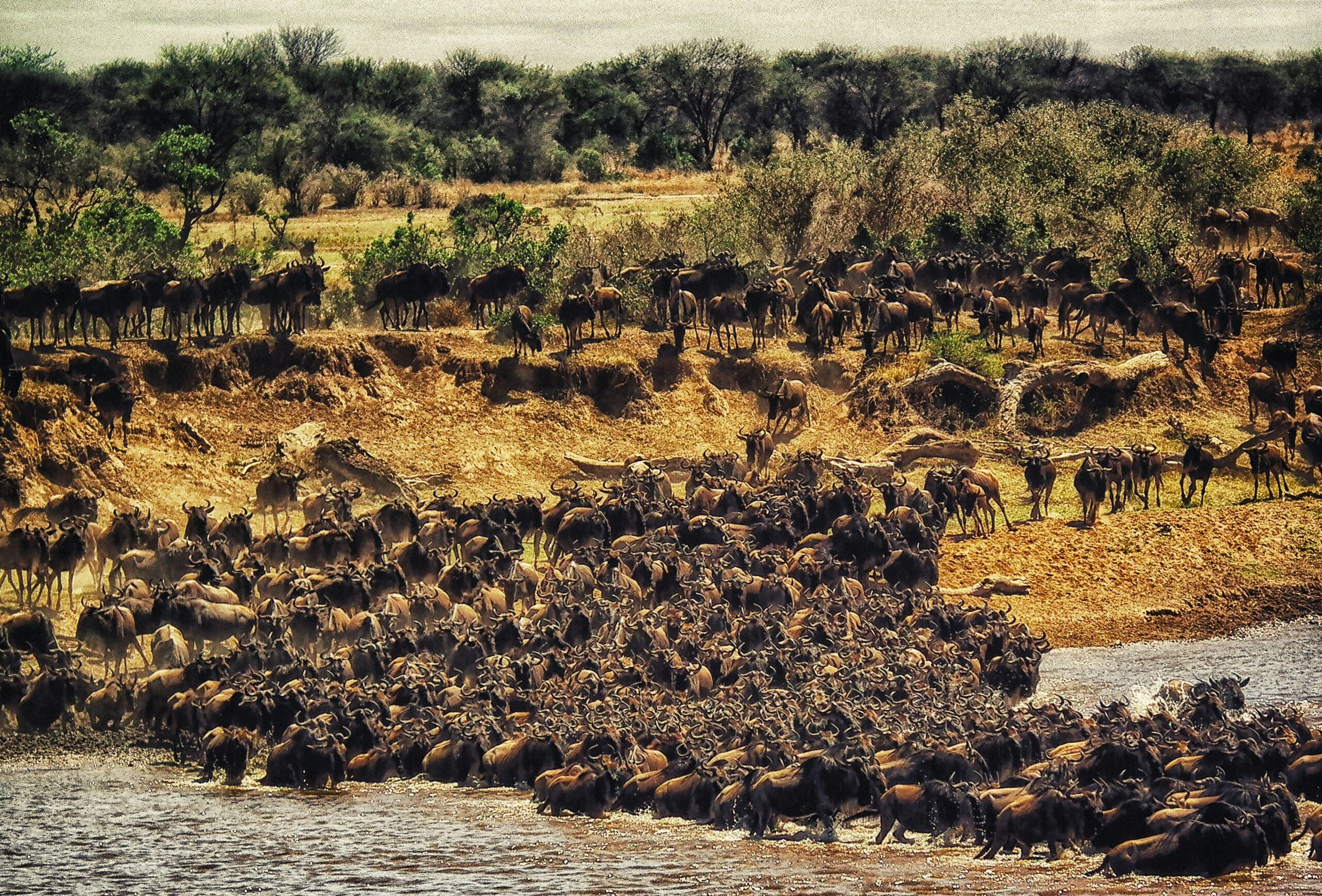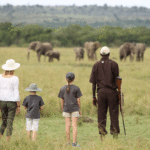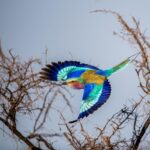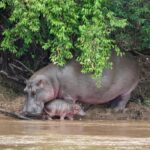
Guide to Planning Your African Safari and Holiday
Africa, a continent of unparalleled beauty and diverse landscapes, offers a plethora of experiences for the adventurous traveler. A safari, the quintessential African adventure, provides an opportunity to witness the continent’s incredible wildlife in their natural habitats. However, a successful trip requires careful planning, considering factors such as destination, time of year, budget, and personal preferences. This guide will help you navigate the complexities of planning your African safari and holiday.
Choosing Your Safari Destination is the key to planning your African safari and holiday
The first step in planning your safari is selecting the destination. Africa boasts a wide array of options, each with its unique charm and wildlife concentrations.
- East Africa: Kenya and Tanzania are classic safari destinations, renowned for their iconic national parks and the Great Migration. The Serengeti in Tanzania and the Maasai Mara in Kenya offer exceptional wildlife viewing, including the Big Five (lion, leopard, elephant, rhino, and buffalo). The Serengeti is particularly famous for the Great Migration, where millions of wildebeest, zebra, and gazelle traverse the plains in search of greener pastures, a spectacle that sets off annually around July towards the Masai Mara in Kenya.
- Southern Africa: South Africa, Botswana, Zambia, and Zimbabwe offer diverse landscapes and wildlife experiences. South Africa combines excellent wildlife viewing in Kruger National Park with the attractions of Cape Town and the Winelands. Botswana is renowned for its exceptional wildlife viewing, animal diversity, and excellent private lodges, with the Okavango Delta offering a unique water-based safari experience.
- Zambia is known for its walking safaris, and Zimbabwe offers excellent guides and the opportunity to visit Victoria Falls.
- Other Destinations: Namibia offers breathtaking desert landscapes and unique desert-adapted wildlife. Uganda is known for its tree-climbing lions and gorilla trekking. Mozambique is developing as a safari destination with inspiring conservation stories.
Best Time to Go
The best time to visit Africa for a safari depends on the region and the specific wildlife you want to see. Generally, the dry season (June to October) is considered the optimal time for wildlife viewing in Southern and Eastern Africa. During this period, animals congregate around water sources, and vegetation is sparser, making them easier to spot. However, the rainy season can be better for landscape photography and birding.
Budgeting for Your Safari
In planning your African safari and holiday, the cost of an African safari can vary significantly depending on the destination, the level of luxury, and the duration of your trip. Budget safaris can range from USD $100 to $300 per person per night, while mid-range options cost between USD $300 and $600. Luxury safaris in private game reserves can cost USD $600 to $2,000 or more per person per night. Consider factors such as park entrance fees, accommodation, transportation, activities, and gratuities when budgeting.
Knowing the Types of Safaris is essential in planning your African safari and holiday
There are various types of safaris to choose from, each offering a unique experience:
- Self-Drive Safaris: These are a more affordable option, allowing you to explore national parks in your own vehicle. However, you’ll need to be comfortable with driving and navigating, and you may miss out on some wildlife sightings without a guide.
- Organized Safari Tours: These tours offer a more structured experience, with accommodation, transportation, and game drives included. You can choose from group tours or private safaris, depending on your budget and preferences.
- Walking Safaris: These offer an immersive experience, allowing you to explore the bush on foot with a qualified guide. Zambia is particularly renowned for walking safaris.
- Water Safaris: These are a unique way to experience wildlife, particularly in the Okavango Delta in Botswana, where you can explore the waterways by mokoro (traditional dugout canoe).
Accommodation Options
Accommodation options range from basic campsites to luxurious lodges and tented camps. Consider the following factors when choosing your accommodation:
- Location: Choose accommodation that is conveniently located for game drives and other activities.
- Amenities: Consider the amenities offered, such as a swimming pool, restaurant, and Wi-Fi.
- Family-Friendliness: If you’re traveling with children, choose lodges that welcome kids and offer kid-friendly activities.
Activities Beyond Safari
While game drives are the highlight of a safari, there are many other activities to enhance planning your African safari and holiday:
- Cultural Experiences: Visit Maasai villages in Kenya or Tanzania to learn about their traditions.
- Beach Holidays: Combine your safari with a beach holiday in Zanzibar, Mombasa, or Durban.
- Hiking and Trekking: Explore the mountains of Lesotho or the forests of Rwanda.
- Scenic Flights: Take a hot-air balloon ride over the Serengeti or a scenic flight over the Okavango Delta.
Packing Essentials
Pack comfortable, neutral-colored clothing, layers for varying temperatures, sturdy footwear, a hat, sunglasses, sunscreen, and insect repellent. Binoculars are essential for wildlife viewing, and a good camera with a long lens is recommended for capturing stunning wildlife images.
Safety Considerations while Planning Your African Safari and Holiday
While safaris are generally safe, it’s essential to follow safety guidelines and heed the instructions of your guides. Avoid walking in the bush alone, and be aware of potentially dangerous animals such as elephants, buffalo, and hippos.
Responsible Travel
Choose safari operators that are committed to responsible tourism practices, supporting conservation efforts, and benefiting local communities. Respect wildlife by maintaining a safe distance and avoiding disturbing their natural behavior.
Specific Destination Recommendations
- For First-Timers: The Maasai Mara in Kenya and the Serengeti in Tanzania are excellent choices for first-time safari-goers, offering iconic wildlife viewing and the chance to witness the Great Migration.
- For Luxury Seekers: Sabi Sands in South Africa and Tswalu Kalahari are known for their luxurious lodges and exceptional wildlife experiences.
- For Families: South Africa, Swaziland (Eswatini), and Lesotho offer family-friendly options with malaria-free areas and easy access to amenities.
- For Experienced Safari-Goers: Consider exploring off-the-beaten-path destinations like Ruaha National Park in Tanzania or North Luangwa National Park in Zambia.
Detailed Breakdown of Costs and Logistics
To provide a more concrete understanding of the costs and logistics involved, let’s break down a sample 10-day safari itinerary:
Sample Itinerary: 10-Day Safari in Tanzania (Serengeti & Ngorongoro)
- Days 1-3: Arusha & Tarangire National Park:
- Activities: Arrival in Arusha, transfer to Tarangire National Park, game drives.
- Accommodation: Mid-range lodge (e.g., Tarangire Sopa Lodge).
- Estimated Cost: $400-$600 per person per night (including accommodation, meals, park fees, and game drives).
- Days 4-6: Serengeti National Park:
- Activities: Game drives in the Serengeti, including the central Serengeti and possibly the Western Corridor (depending on the time of year).
- Accommodation: Tented camp or lodge (e.g., Serengeti Serena Safari Lodge).
- Estimated Cost: $500-$800 per person per night.
- Days 7-8: Ngorongoro Crater:
- Activities: Game drive in the Ngorongoro Crater, visit a Maasai village.
- Accommodation: Lodge on the crater rim (e.g., Ngorongoro Serena Safari Lodge).
- Estimated Cost: $450-$700 per person per night.
- Days 9-10: Departure:
- Activities: Transfer back to Arusha, departure.
- Estimated Cost: Transportation costs (flights, transfers) and any additional activities.
Total Estimated Cost (per person): $5,000 – $8,000 (This is a rough estimate and can vary significantly based on the level of luxury, time of year, and specific activities chosen.)
Additional Costs to Consider:
- Flights: International flights to Tanzania (e.g., to Kilimanjaro International Airport – JRO) can range from $800 to $2,000+ depending on the origin and time of booking.
- Travel Insurance: Essential for covering medical emergencies, trip cancellations, and lost luggage.
- Visas: Tanzania requires a visa for most nationalities.
- Gratuities: Tipping guides, drivers, and lodge staff is customary.
- Souvenirs and Personal Expenses: Allow for spending money on souvenirs, drinks, and any optional activities.
Logistics:
- Booking: Book your safari well in advance, especially if traveling during peak season.
- Vaccinations and Health: Consult your doctor about necessary vaccinations and malaria prophylaxis.
- Flights: Book international and domestic flights.
- Transfers: Arrange for airport transfers and transportation between parks.
- Packing: Pack appropriate clothing, gear, and essentials.
Detailed Breakdown of Specific Destinations
Let’s delve deeper into some of the most popular safari destinations, providing more specific insights:
- Kruger National Park, South Africa: Kruger is a vast park with diverse landscapes and a high density of wildlife. It offers a range of accommodation options, from budget-friendly campsites to luxurious lodges. The best time to visit is during the dry season (May to September). Consider combining a Kruger safari with a visit to Cape Town and the Winelands. The park is also surrounded by a number of superb private reserves with limited numbers and no self-drives allowed, which means that wild Africa comes growling right up to you.
- Serengeti National Park, Tanzania: The Serengeti is famous for the Great Migration and offers incredible wildlife viewing. The best time to visit is during the dry season (June to October) for wildlife viewing, or during the migration (July to October). The vast plains of the Serengeti, in northern Tanzania, star in nature documentaries for good reason. Not only is it a striking landscape, but it’s home to incredible wildlife, most of which is extremely habituated to tourists.
- Maasai Mara National Reserve, Kenya: The Maasai Mara is the Kenyan portion of the Serengeti ecosystem and offers excellent wildlife viewing, including the Big Five. The best time to visit is during the Great Migration (July to October). The key to enjoying your time in the Mara is avoiding the crowds — that means finding a great guide or paying a little extra to stay in one of the private community-run conservancies around the edges of the national park.
- Okavango Delta, Botswana: The Okavango Delta offers a unique water-based safari experience. The best time to visit is during the dry season (May to October). The Okavango Delta is one of the most beautiful and wildlife-rich areas in Africa. Located in northern Botswana, it is fed by floodwaters from Angola between May and October. This is the time when visitors can explore the reed-lined waterways by mokoro — a traditional canoe — which is a particularly special experience.
- Etosha National Park, Namibia: Etosha is known for its striking desert landscapes and abundant wildlife, including elephants, lions, and rhinos. The best time to visit is during the dry season (May to October). While the density of its wildlife is much lower than other parts of Africa, Namibia makes up for it with its breathtaking desert landscapes.
Consider Responsible Safari Practices when Planning Your African Safari and Holiday
To ensure your safari has a positive impact, consider these responsible travel practices:
- Choose Eco-Friendly Operators: Select tour operators and lodges that prioritize sustainability and minimize their environmental impact.
- Support Local Communities: Choose operators that support local communities through employment, education, and conservation initiatives.
- Respect Wildlife: Maintain a safe distance from animals, avoid feeding them, and refrain from disturbing their natural behavior.
- Reduce Your Footprint: Pack light, avoid single-use plastics, and conserve water and energy.
- Educate Yourself: Learn about the local culture, wildlife, and conservation challenges.
- Offset Your Carbon Emissions: Consider offsetting the carbon emissions from your flights and other travel activities.
Conclusion
Planning an African safari and holiday is a significant undertaking, but the rewards are immeasurable. By carefully considering your destination, budget, preferences, and responsible travel practices, you can create a truly unforgettable experience. With the right planning, your African adventure will be a journey of a lifetime, filled with incredible wildlife encounters, stunning landscapes, and lasting memories.
The best safari destinations for first-timers include the Maasai Mara in Kenya and the Serengeti in Tanzania, offering iconic wildlife viewing and the chance to witness the Great Migration. For luxury seekers, Sabi Sands in South Africa and Tswalu Kalahari are known for their luxurious lodges and exceptional wildlife experiences. South Africa, Swaziland (Eswatini), and Lesotho offer family-friendly options with malaria-free areas and easy access to amenities. Experienced safari-goers might consider exploring off-the-beaten-path destinations like Ruaha National Park in Tanzania or North Luangwa National Park in Zambia.




Leave a comment:
You must be logged in to post a comment.